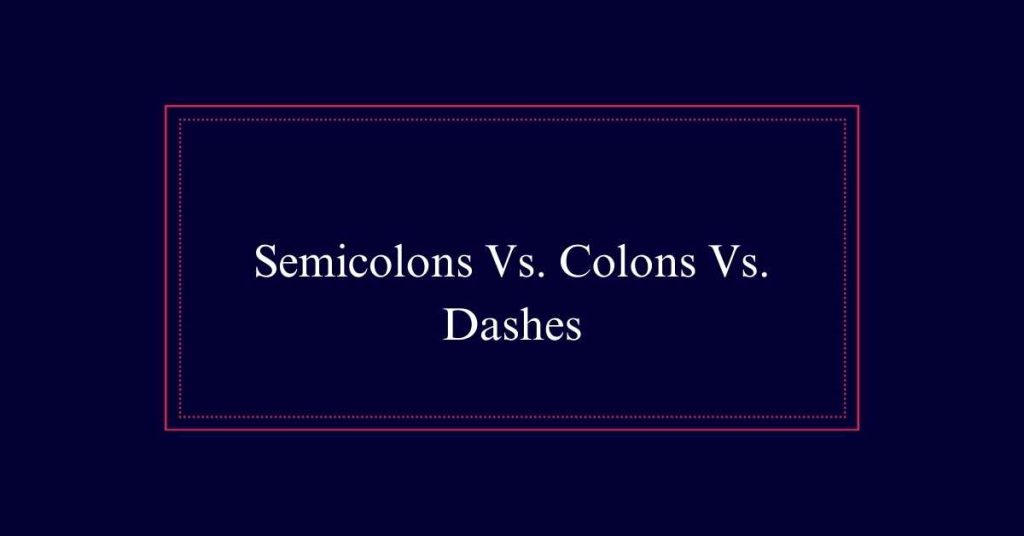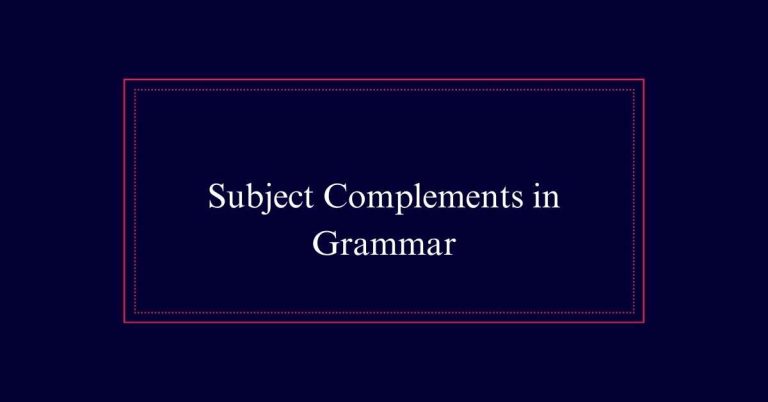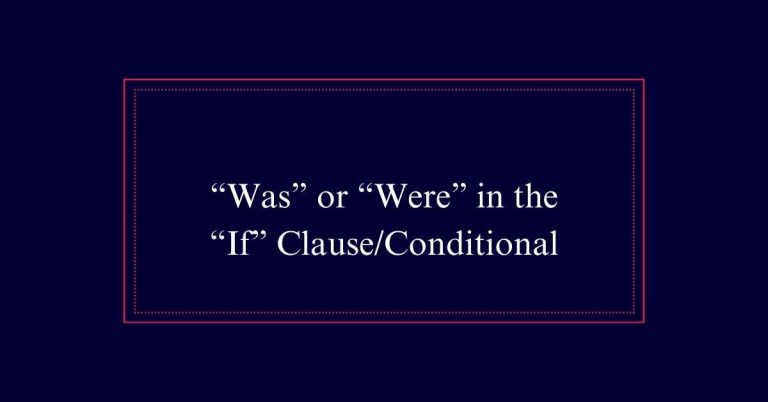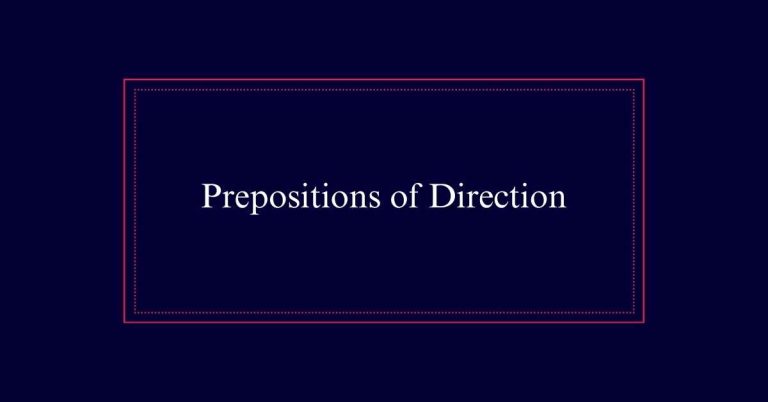Semicolons Vs. Colons Vs. Dashes
Colons introduce additional information after a complete sentence, lists, or elaborate on previous clauses. Em dashes add emphasis or interject thoughts, often replacing commas or parentheses for dramatic effect. En dashes indicate ranges or connections between nouns, providing precision and improving readability. Capitalization rules after colons vary by region, ensuring clarity.
Understanding Semicolons
Semicolons are important tools for linking closely related independent clauses without using conjunctions. They allow writers to create a detailed sentence while maintaining a clear relationship between the ideas.
For instance, ‘She loves reading; he prefers watching movies.’ Here, the semicolon connects two independent thoughts that are related but could stand alone. It signifies a deeper relationship between the clauses, more so than a period would.
Semicolons can also help avoid the repetitive use of conjunctions like ‘and’ or ‘but.’ However, they should not be used to introduce lists. Proper usage of semicolons enhances the flow of writing, making it more sophisticated and readable. This punctuation mark is essential for clear and effective communication.
Understanding Colons
A colon is a powerful punctuation mark used to introduce additional information following a complete sentence. It provides clarity and emphasis.
For example, use a colon to present a list after a full sentence: ‘She bought three items: apples, oranges, and bananas.’ Colons can also separate two independent clauses when the second clause explains or elaborates on the first: ‘He had one goal: to win.’
Capitalize the first word after a colon if it starts a new sentence or is a proper noun. In American English, this rule is more flexible. In British English, only capitalize if it’s a proper noun.

Understanding Em Dashes
Em dashes (—) are versatile punctuation marks that can add emphasis, interject thoughts, or replace other punctuation for clarity. They are longer than hyphens and en dashes.
Em dashes can replace commas, colons, or parentheses to create a more dramatic pause or to set off additional information. For example, “The meeting—originally scheduled for noon—was postponed.” This emphasizes the inserted detail more than commas would.
Em dashes are also useful for abrupt changes in thought: “I was going to call you—but I forgot.” They can introduce a list or explanation in place of a colon: “She brought everything—apples, oranges, bananas.”
Understanding En Dashes
While em dashes add dramatic emphasis, en dashes serve a different purpose in writing. En dashes primarily indicate ranges, such as ‘2020–2023,’ replacing the word ‘to.’ They also connect complex compound adjectives, like ‘New York–London flight.’ Additionally, en dashes can show relationships, such as ‘mother–daughter bond.’
Unlike the em dash, the en dash is shorter and less intrusive. It offers clarity without drawing too much attention. En dashes are essential for professional writing because they enhance readability and precision. Understanding their proper use guarantees your writing is clear and correctly formatted.
Semicolons in Sentences
Semicolons effectively link related independent clauses to create more complex and nuanced sentences. They provide a way to join two ideas that are closely related without using a conjunction. This can make your writing more fluid and sophisticated.
Using semicolons can:
- Connect two independent clauses for a smoother flow.
- Clarify lists where items contain commas.
- Emphasize the relationship between clauses.
For example, consider the sentence, ‘She loves to read; her favorite genre is historical fiction.’ The semicolon helps to connect these thoughts seamlessly.
Additionally, semicolons can help avoid confusion in complex lists, like, ‘On our trip, we visited Paris, France; Rome, Italy; and Berlin, Germany.’
Colons in Sentences
Colons serve to introduce additional information or explanations in a sentence. They often follow a complete independent clause. For example: ‘She had one goal: to win the championship.’
Colons can also precede lists, such as in ‘He packed the essentials: toothbrush, soap, and towel.’
In American English, capitalize the word following a colon if it starts a new sentence or is a proper noun. In British English, capitalize only proper nouns after a colon.
Besides lists, colons can separate two related independent clauses, like ‘He was clear: success required hard work.’
When to Use Em Dashes
Em dashes are a versatile punctuation mark that can introduce interruptions, add emphasis, or replace other punctuation marks for clarity. They are longer than both hyphens and en dashes, providing a distinct visual break in text.
Em dashes can be used in various ways:
- Interruption: Use them to insert a sudden break or change of thought within a sentence.
- Emphasis: Highlight important information or add dramatic flair to your writing.
- Replacement: Substitute for commas, parentheses, or colons when you need a stronger break or want to avoid overloading your sentence with commas.
When to Use En Dashes
En dashes serve specific purposes in writing, offering clarity in ranges, compound adjectives, and connections between two nouns.
In ranges, en dashes replace the word ‘to,’ as in ‘pages 10–20.’ They also form compound adjectives where two-word phrases are combined, such as ‘New York–based company.’
En dashes can show relationships or conflict between paired nouns, like ‘mother–daughter relationship’ or ‘US–Canada border.’ This punctuation mark is longer than a hyphen but shorter than an em dash.
Capitalization After Colons
Capitalization after colons varies between American and British English. In American English, the first word following a colon is capitalized if it starts a new sentence or is a proper noun. On the other hand, British English only capitalizes the word if it is a proper noun.
These guidelines help maintain clarity and consistency in writing.
Here are key points to remember:
- American English: Capitalize if it starts a new sentence or is a proper noun.
- British English: Capitalize only proper nouns.
- Acronyms: Always capitalize after a colon.
Punctuation in Lists
Punctuation in lists plays an important role in guaranteeing clarity and readability. Different punctuation marks can be used to improve the structure and flow of lists. Colons are often used to introduce a list following a complete independent clause. Semicolons can separate complex items within a list, especially when internal punctuation is present. Dashes, particularly em dashes, can add emphasis or interject additional information within a list.
| Punctuation | Main Use | Example |
|---|---|---|
| Colon (:) | Introduce list | Items: apples, oranges, bananas. |
| Semicolon (;) | Separate items with internal punctuation | Items: apples, which are red; oranges, which are orange. |
| Em Dash (—) | Add emphasis | Items — apples, oranges, bananas. |






